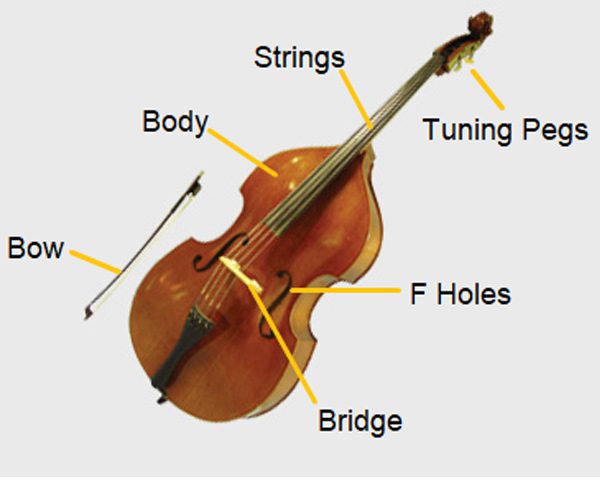The double bass is sometimes called the string bass. The bass is the largest and lowest pitched member of the string family. Standing over 6 feet tall, the bass is about 1 1/2 to 2 times taller than the cello and capable of reaching pitches one octave below the cello. Some bass players stand up to play or while others choose to sit on a stool. Otherwise, the double bass is played much like the cello.
The four strings stretch across the body and fingerboard of the double bass, from one end to the other. The strings are made of steel, and each is tuned by turning the four metal machine heads –unlike the smaller stringed instruments which use wooden pegs.
A bass player must have great finger strength to press the heavy strings. The finger distance on the strings is the greatest on the bass of all the string instruments. A bow can be drawn across its strings or the strings may be plucked with the fingers. Double basses are tuned in fourths, rather than fifths.
The endpin is a spike that extends from the bottom end of the double bass for balance, The endpin slides into the body of the double bass when it is not in use.
There are two different types of bows the bass player may use; a French bow which is held overhand like a violin bow or the Simandl (German) bow which is held with the palm of the hand facing up.
The double bass is used in a wide assortment of musical styles of music from classical to jazz, always providing the rhythmic and harmonic foundation.

